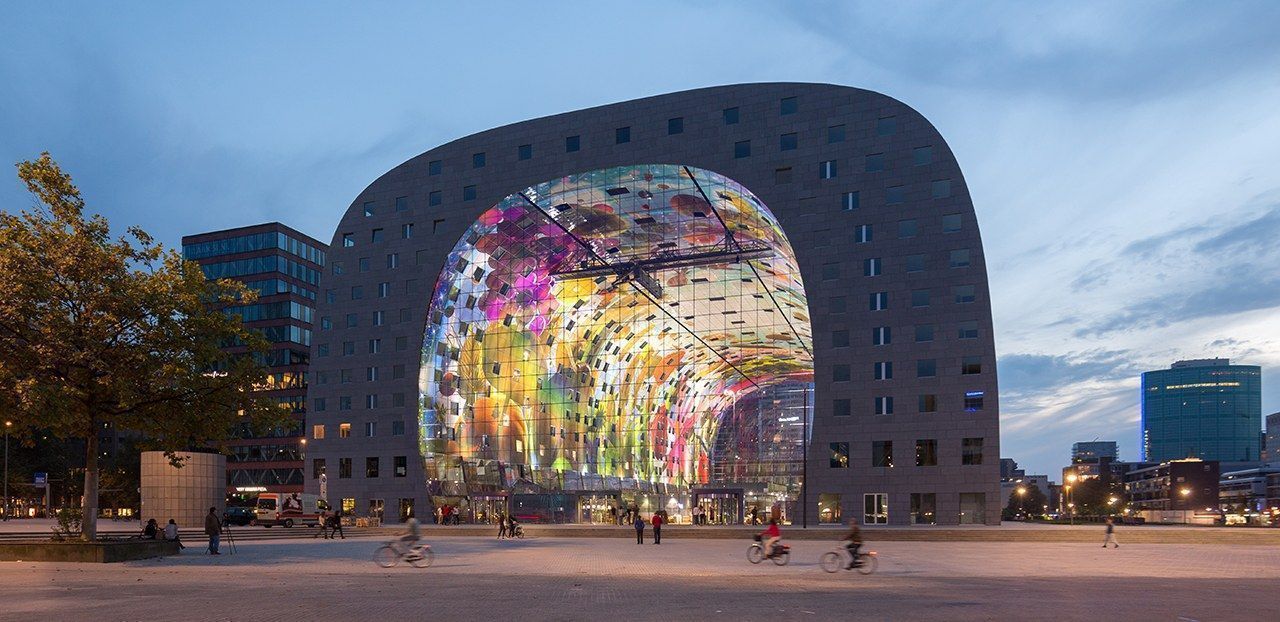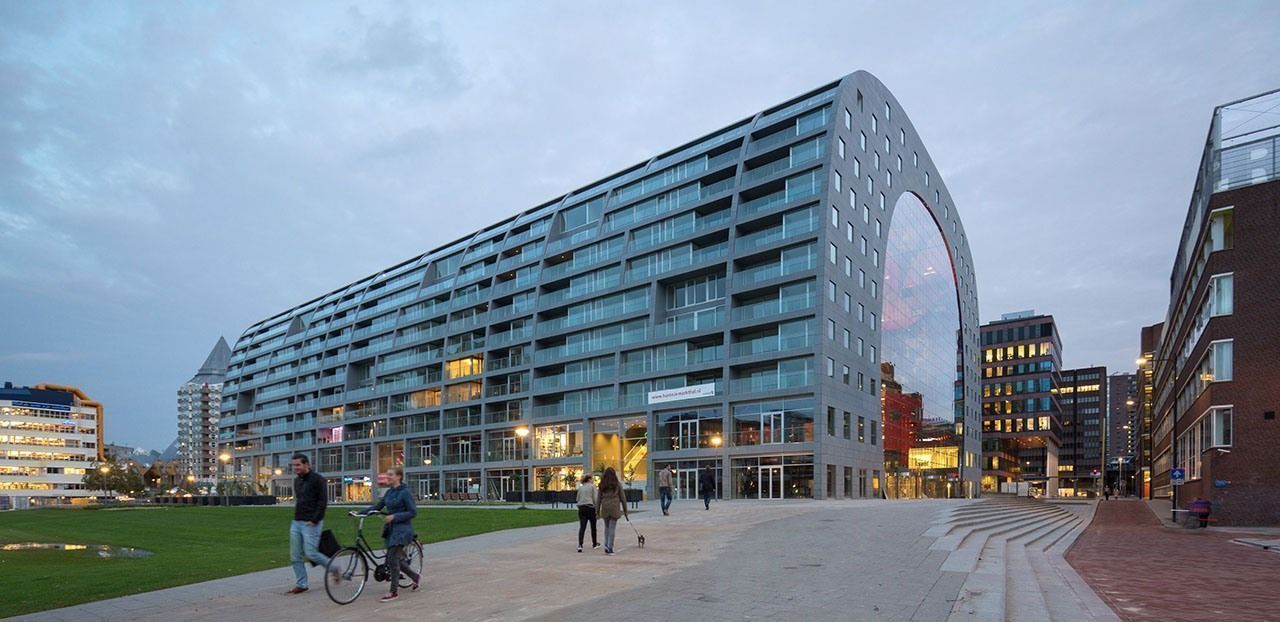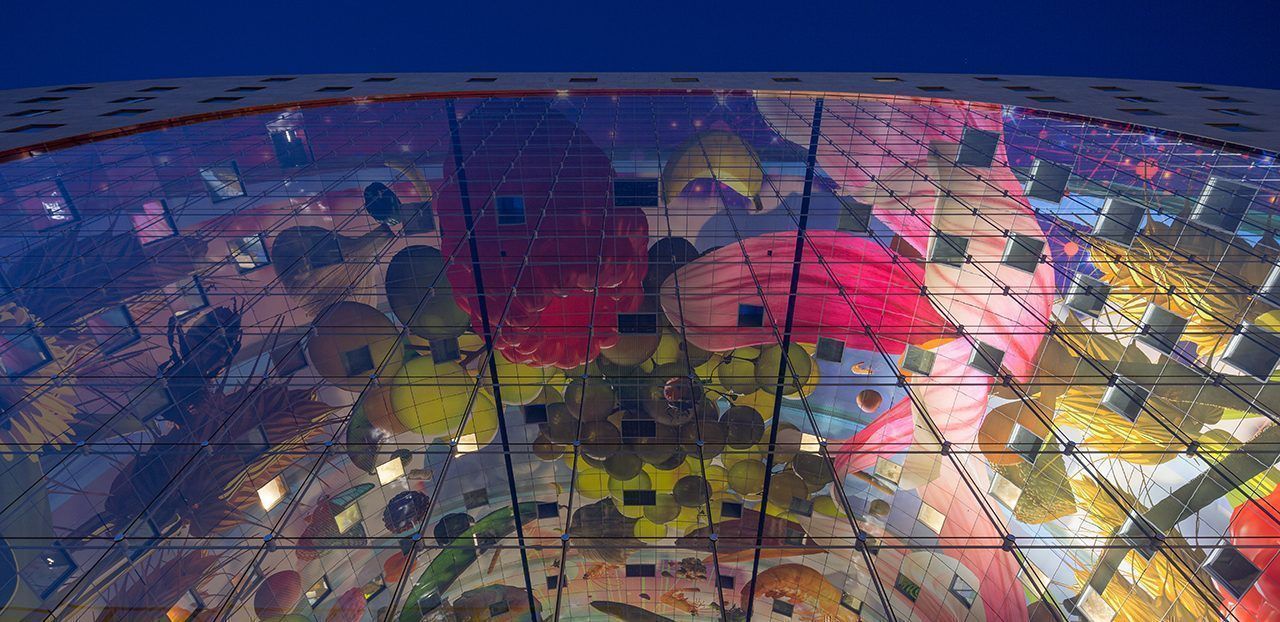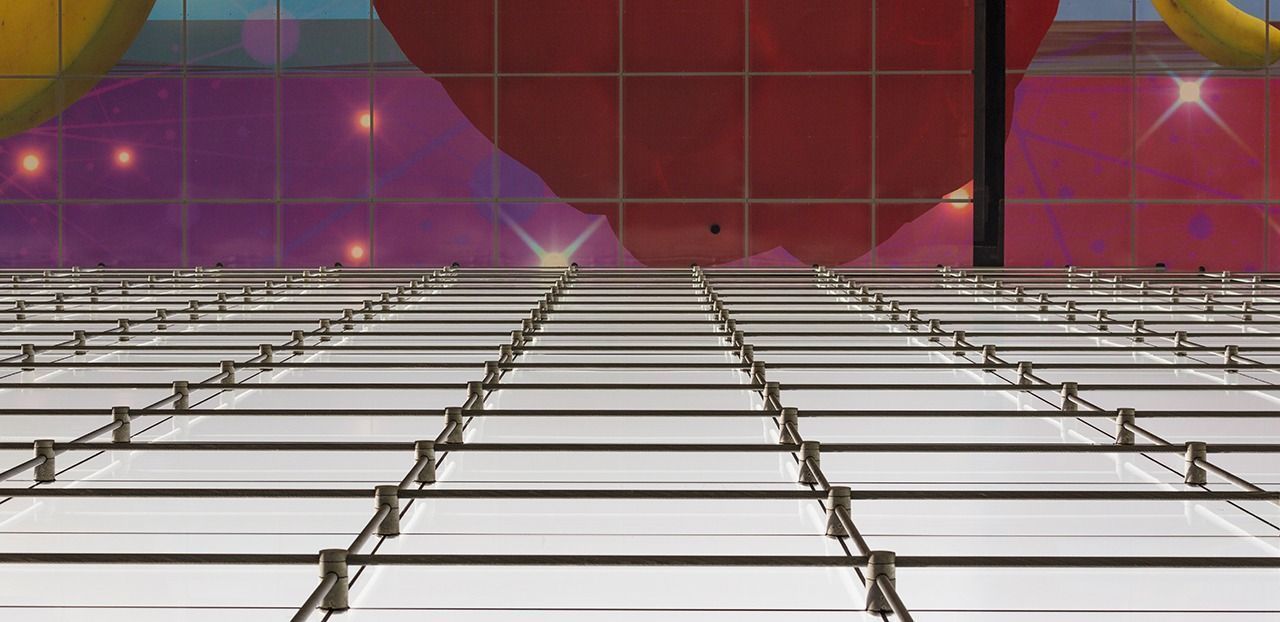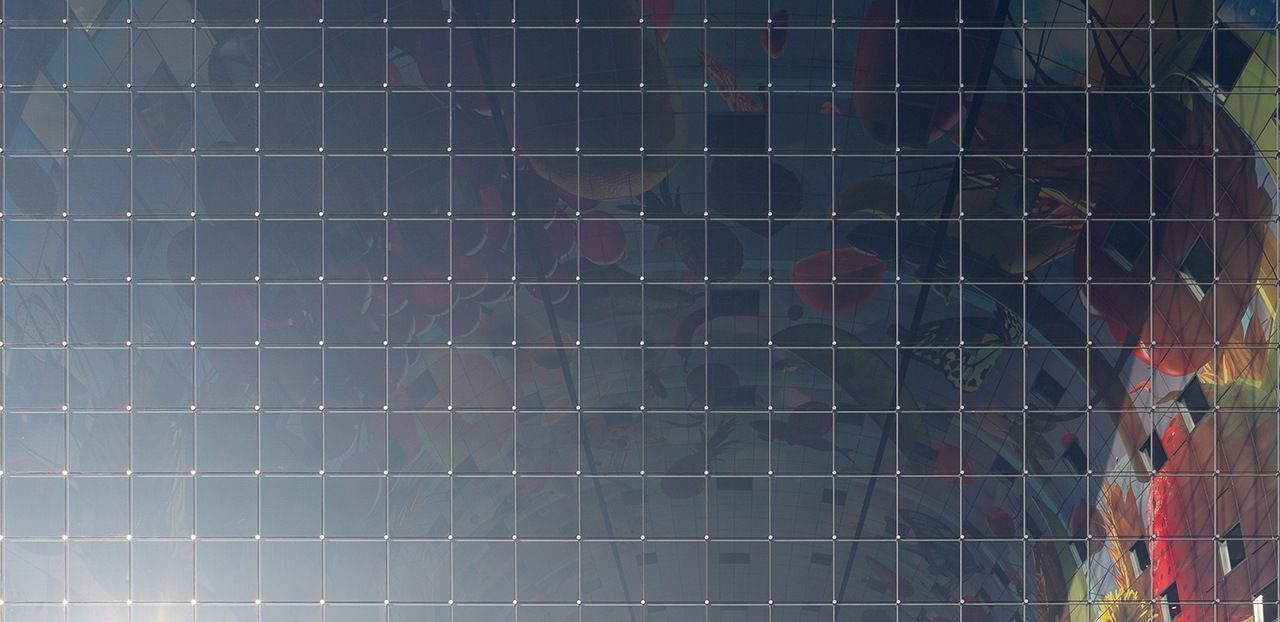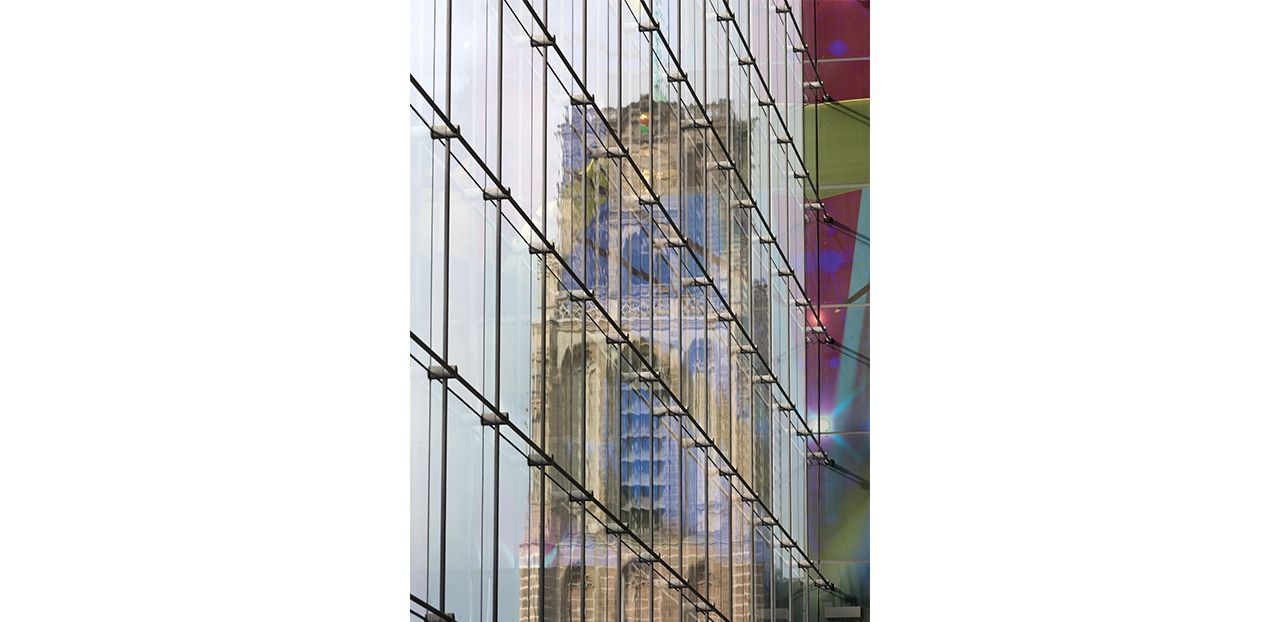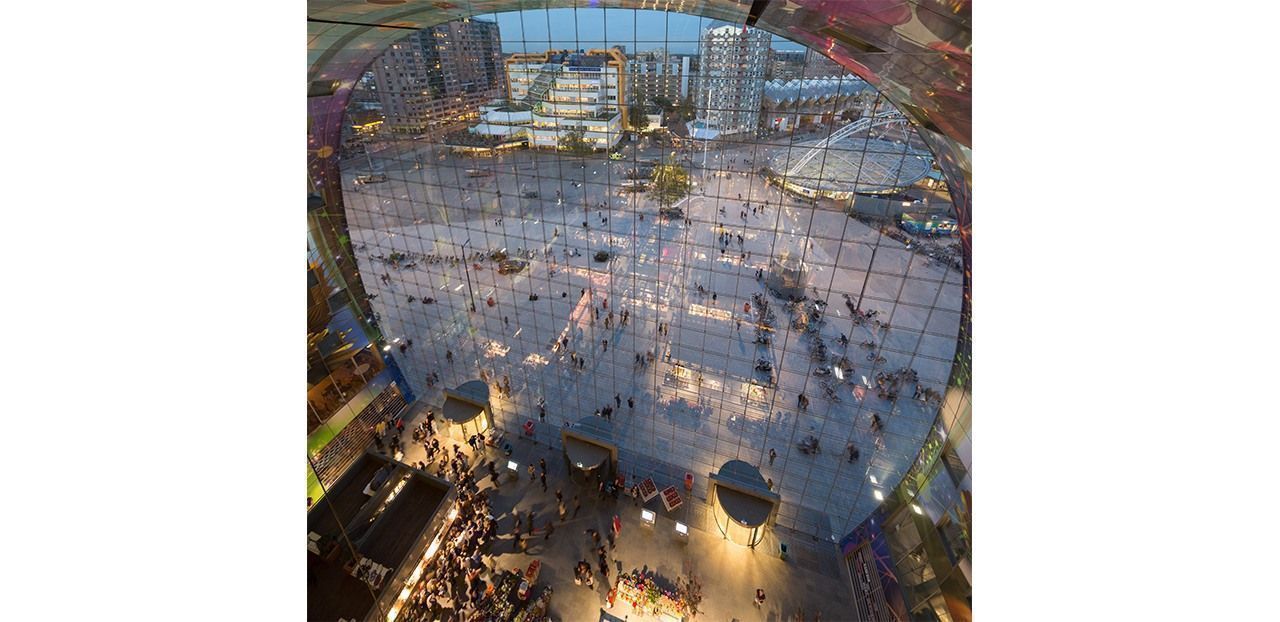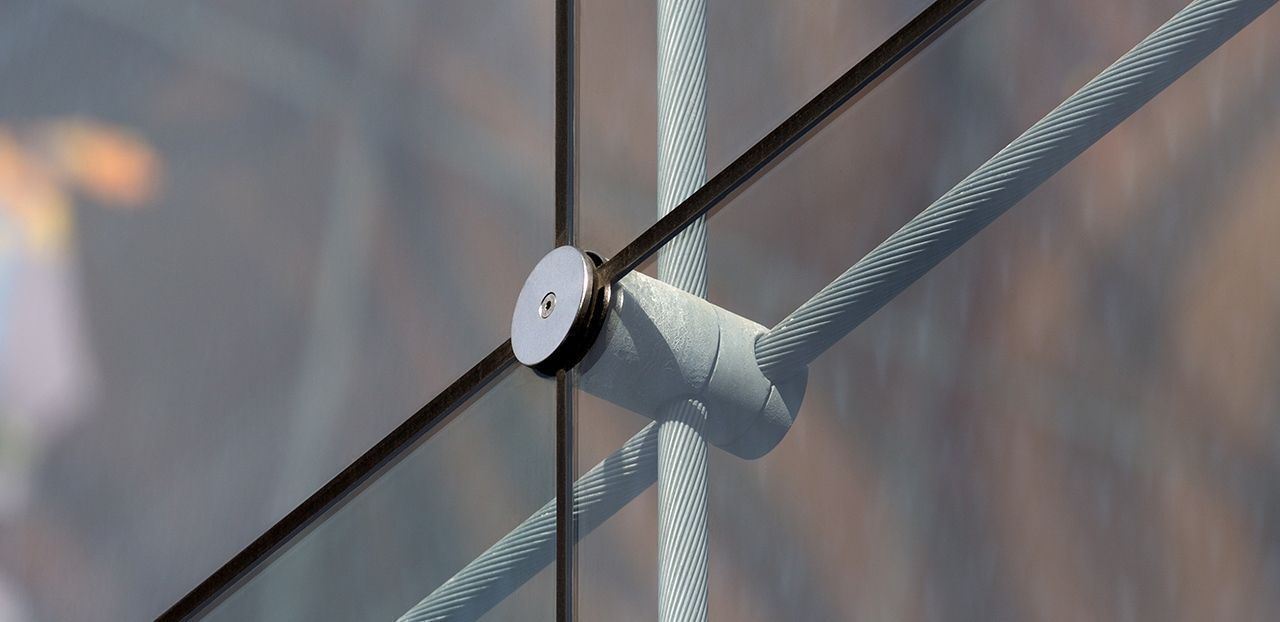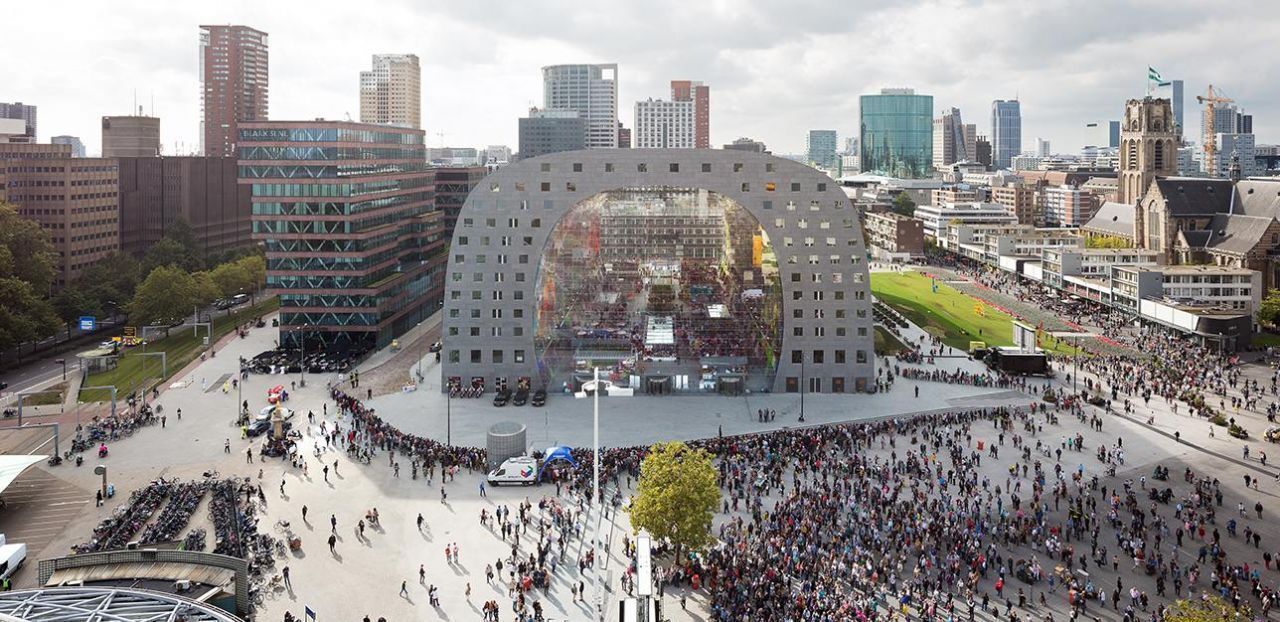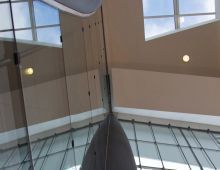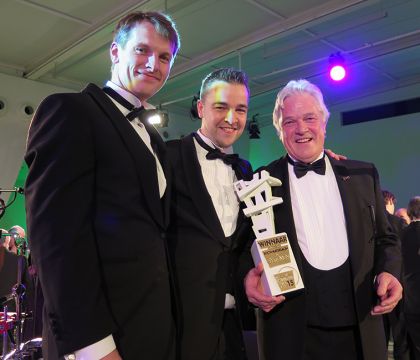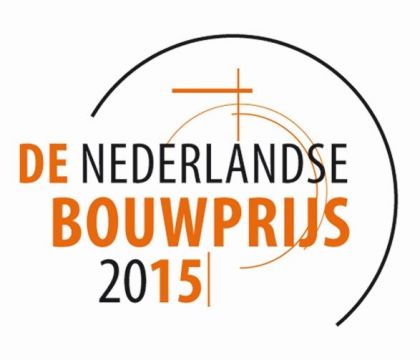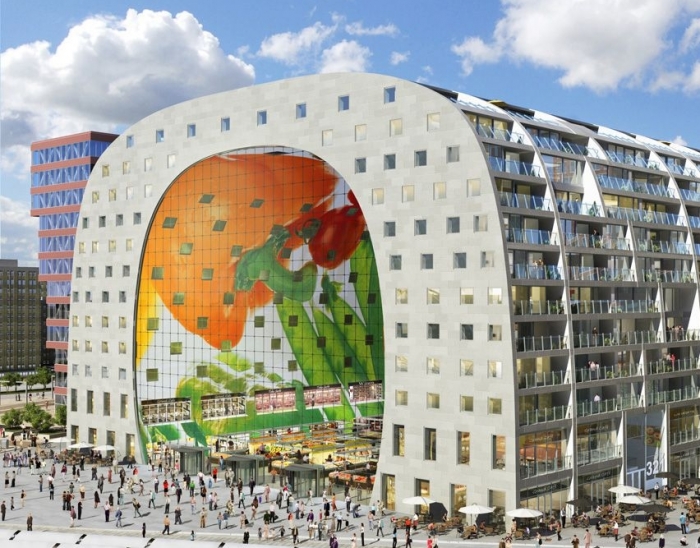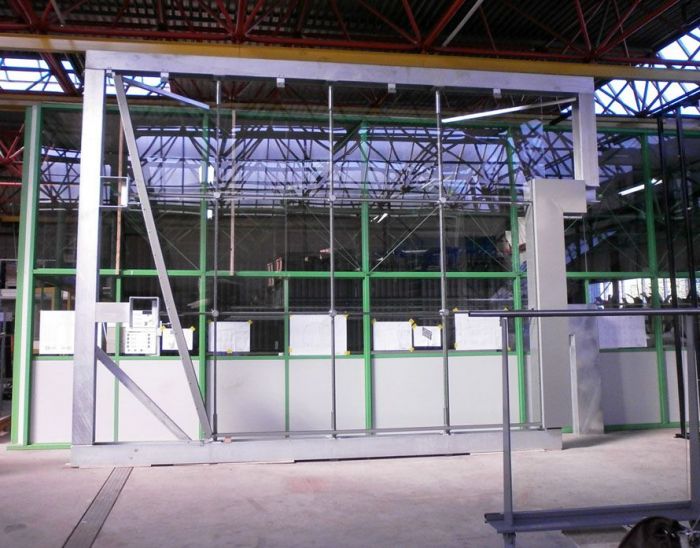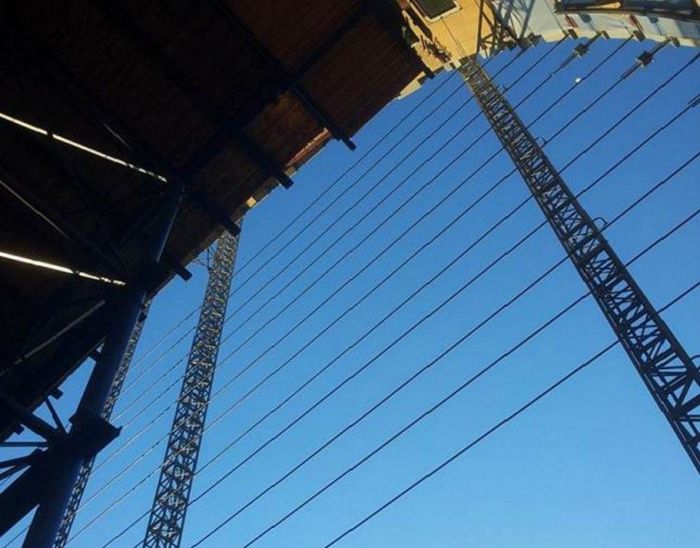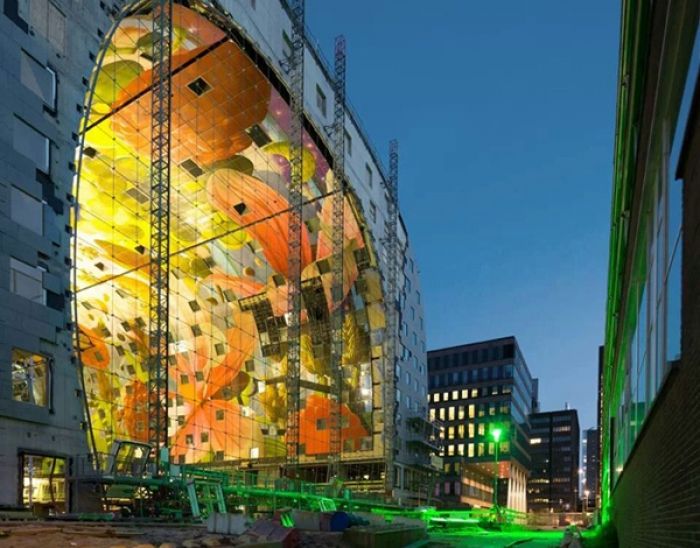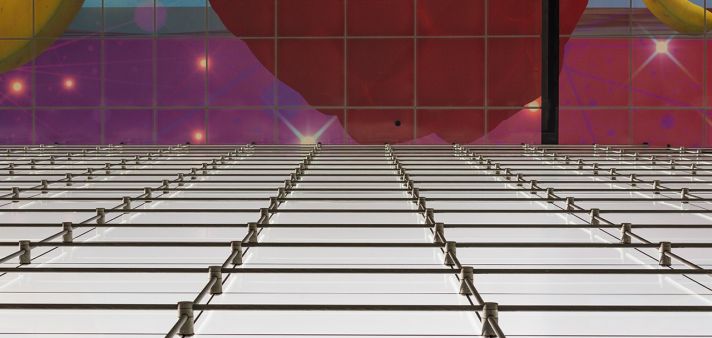Cablenet facades Market Hall Rotterdam
Glass cablenet façades for maximum transparency
Ultrathin, hanging and flexible glass facades stabilized by a net of vertical and horizontal cables. In other words: maximum transparency combined with minimal construction. These spectacular glass cablenet facades of the now iconic Rotterdam Market Hall are, with a size of 42 meters wide and 35 meters high, the largest known in Europe.
Octatube signed for the engineering, production, installation and realization. In collaboration with: Provast (Developer), JP van Eesteren (Main Contractor), RoyalHaskoningDHV (Structural Designer), MVRDV (Architect) and Inbo (Interior Architect).
The Rotterdam Market Hall is a housing project and market hall in one. The apartment complex that simultaneously forms the roof for a large fresh market with stalls, stores, restaurants, supermarket and underground parking, is unique in the world. It is the first indoor fresh market in the Netherlands. The building - designed by architects MVRDV - had to be as transparant as possible to invite shoppers inside. At the same time, of course, the Market Hall had to be wind and watertight.
Cablenet façade
Because of the limited space for a steel façade, RoyalHaskoningDHV came up with the idea and structural design for a cable façade. Octatube then engineered the design for a gigantic glass cablenet façade. In total there are 26 vertical and 22 horizontal cables. Together they form a suspended net with a single-layer support structure, similar to a tennis racket.
The cables are pre-stressed between strong steel consoles embedded into the concrete structure of the building. We designed these nesting boxes as we call them, in such way that rough concrete tolerances could be translated into tight tolerances needed to construct the glass facade. The galvanized steel cables run through spherical joints that allow deformations and help prevent material fatigue.
Pre-stressed
One of the technical challenges was how to deal with the high pre-stress forces that had to be transferred to the concrete arch. The cables have a diameter of 31.3 millimeters and a characteristic breaking strength of 884 kilonewtons. The cables are each prestressed to a maximum of 300 kilonewtons, of which 50 kilonewtons are in fact surplus capacity to deal with the consequences of creep in the concrete. A specially written prestressing protocol allows the concrete arch structure to be loaded gradually and evenly.
Cast nodes
Specially designed steel cast nodes are placed where the cables cross each other. In addition, the nodes fasten the corners of four glass panels in one single detail. The distance from the horizontal cables to the glass is 150 millimeters, that from the vertical cables to the glass is 100 millimeters. Laminated single glass panels with a typical dimension of 1485 by 1485 millimeters are fixed to the cables by means of circular clamping plates.
Deformation
During extreme wind loads, the middle of the glass cablenet facade can be exposed to deflections up to 70 centimeters. A horizontal deflection of a façade with such tolerances is one of the characteristics of cablenet facades. The deformation causes the cables to elongate so that the facade deflects. In the corners of the facade where two sides of the glass panels are more or less fixed, one corner can move inwards and outwards up to 50 millimeters. This temporarily twists the glass panel. Interesting is that the steel frames of the door portals move with the facade while the revolving doors themselves remain on the ground.
Transparent glass
The two cablenet facades both have a total glazed area of over 1250 square meters. The typical glass panel is 1485 by 1485 millimeters, composed of clear heat-strengthened float glass. The single glass units are laminated with two panes of 6 millimiters. To make the facades as transparent as possible, no coating was applied to the glass.
Collaboration
Glass cablenet facades are a perfect tool to create highly transparent facades with a minimum amount of material. These kinds of systems and solutions fit perfectly within the working methods and expertise of Octatube, where all departments from design to realization are housed under one roof. Combined with the close collaboration with all parties involved, this is the key to achieve innovation and reliable results.

